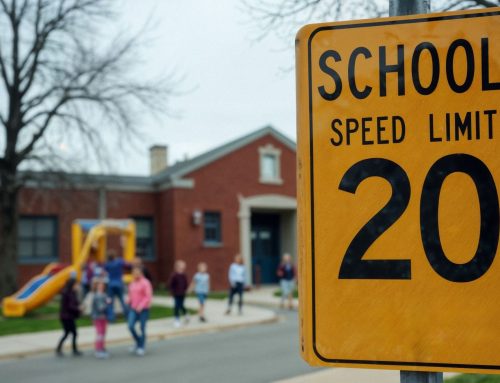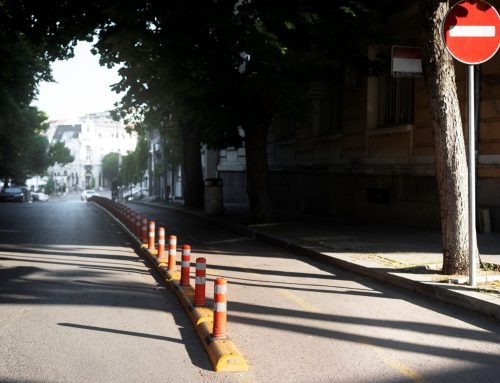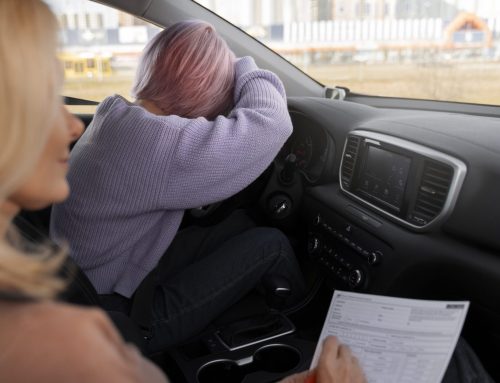Speeding in Ontario can do more than lighten your wallet—it can leave your car impounded for speeding and you stranded at the roadside. The Highway Traffic Act (“HTA”) empowers officers to seize vehicles driven at dangerous speeds, and those powers have expanded steadily over the past decade. This guide explains when police can impound a car for speeding, the precise steps in the impound process, and the practical measures you can take—both behind the wheel and in court—to keep your vehicle keys where they belong.
Understanding Ontario’s Vehicle Impound Laws
Ontario’s vehicle impound laws are safety-driven. Sections 172 and 220 of the HTA, plus O. Reg. 455/07, allow police to remove a speeding vehicle from the road in two different ways:
- Administrative (roadside) impoundment—designed to curb immediate danger.
- Judicial (post-conviction) impoundment—aimed at repeat or egregious offenders.
Both tracks aim to deter the behaviours that cause catastrophic collisions.
What the Law Says About Speeding
Standard speeding tickets are issued under HTA Part I. Fines rise with each 10 km/h band over the posted limit (see table, below), and three to six demerit points can follow a conviction. Yet those penalties alone do not seize your vehicle. An officer must also have legal grounds under sections 172 or 220, confirm the driver’s identity, and complete a seizure notice before police can tow the car for speeding.
Key Differences Between Speeding and Stunt Driving
“Stunt” or “race” driving is defined in HTA s. 172 and O. Reg. 455/07. Two key distinctions matter:
- Speed thresholds—40 km/h over in zones under 80 km/h; 50 km/h over anywhere else; or any speed over 150 km/h.
- Dangerous manoeuvres—such as drifting, wheelies, or tire squealing for the purpose of show.
Once an officer has reasonable grounds to believe either condition is met, a speeding vehicle impound becomes mandatory for 14 days, alongside a 30-day roadside licence suspension.
When Can Police Legally Seize a Car for Speeding?
Understanding when can police seize your car for speeding turns on two pillars:
- On-scene seizure (HTA s. 172.4) for stunt or racing allegations.
- Court-ordered seizure (HTA s. 220) after conviction, where public safety or repeat history warrants it.
Thresholds for Speed-Based Vehicle Seizure
| Excess Speed | Posted Limit | Officer’s Immediate Power | Potential Court-Ordered Impound |
| 1 – 29 km/h | Any | Discretionary tow if necessary for safety | Not applicable |
| 30 – 39 km/h | Any | Discretionary tow if necessary for safety | Not applicable |
| 40 km/h + | 80 km/h zone or lower | Mandatory 14-day stunt impound | Up to 6 months (repeat) |
| 50 km/h + | 80 km/h zone or higher | Mandatory 14-day stunt impound | Up to 6 months (repeat) |
| ≥ 150 km/h | Any | Mandatory 14-day stunt impound | Up to 6 months (repeat) |
Table 1: Speed thresholds that trigger immediate or judicial vehicle seizure.
Immediate vs. Court-Ordered Impoundment
- Immediate administrative impound – Paperwork is issued roadside; the tow truck takes your car directly to a licenced compound. You cannot appeal the impound itself—only the underlying charge.
- Judicial impound – Imposed after conviction, typically on a second or subsequent conviction within five years. Lengths range from 45 days to six months and may involve electronic immobilizers at your own expense.
What Counts as “Excessive Speeding” in Ontario?
Police interpret “excessive” broadly when public safety is at stake, making room for an excessive speeding car seizure even where stunt thresholds are not strictly met.
Examples of Excessive Speeding
- 135 km/h in a posted 90 km/h construction zone at night.
- 100 km/h through a 60 km/h rural intersection with obstructed sightlines.
- 70 km/h in a 30 km/h school zone during school hours.
Penalties Beyond Impoundment
Conviction consequences escalate sharply:
- Fine: $2,000 – $10,000 (first offence)
- Demerit points: Six
- Licence suspension: Up to three years (first) or 10 years (third)
- Increased insurance: Premiums often double for a speeding ticket car impounded conviction.
- Possible jail: Up to 6 months for a first stunt-driving or racing offence.
Impoundment Process: What Happens and for How Long?
Exactly how long is car impounded for speeding in Ontario? Administrative holds are locked at 14 consecutive days—neither weekends nor statutory holidays shorten the clock. Judicial holds vary with the judge’s order.
Initial Seizure and Storage Location
After issuing the seizure notice, police call an approved tow operator. Your vehicle—along with any cargo—travels to a municipal impound that is open daily for fee payment and release. Many owners are surprised to learn that no personal items can be removed without the impound staff’s supervision.
Fees and Responsibilities
Below is a typical GTHA cost outline. Figures fluctuate by region but illustrate why prompt action is critical:
| Fee Type | Typical Range (CAD) |
| Tow (hook-up + 10 km) | $280 – $350 |
| Daily Storage | $60 – $85 |
| Security/Administration | $70 – $90 |
| Long-distance Mileage | $3 – $5/km beyond 10 km |
Table 2: Common costs faced by vehicle owners after seizure.
Failing to collect your vehicle on Day 15 triggers further storage charges. After 60 days, the impound can file for a lien and may auction the car.
Street Racing, Stunt Driving, and Automatic Seizures
A street racing – vehicle impound Ontario results the instant two or more vehicles engage in “organized competition.” Courts have upheld seizures where the competitive element was inferred by rapid mutual lane changes, even absent a formal race start.
What Qualifies as Street Racing
- Parallel acceleration from a stoplight.
- “Catch-up” behaviour—pursuing another vehicle at high speed to overtake.
- Blocking traffic to create a space for racing.
- Social-media challenges involving time-trial runs on public highways.
Zero Tolerance and Immediate Action
Police documentation must note the grounds for belief in racing or stunt behaviour; however, the impoundment is still mandatory once grounds are articulated. Body-cam and in-cruiser video often become pivotal evidence later at trial.
Can You Get Your Car Back? Steps and Fines
Who Pays for Impound Fees?
As a legal owner, you foot the entire bill, even if:
- Your friend, child or employee was driving at the time of the incident.
- The vehicle is leased – finance companies usually refuse to pay.
- The car is a rental – the agency will charge the costs back to your credit card.
How Long Does the Process Take?
- Day 0: Seizure notice served; towing commences.
- Days 1-14: Car held at the impound; daily storage accrues.
- Day 15: Present government ID, valid insurance, and proof of ownership to release.
How to Protect Yourself from Vehicle Seizure
Driving Habits That Reduce Risk
- Use real-time speed alerts, most cars now have an option to set up a warning once a certain speed is exceeded.
- Avoid tail-end “late mergers.” Sudden lane changes at high speed are often misread as stunts.
- Neutralize stressors—leave 10 minutes earlier and resist peer pressure to “keep up with traffic.”
Legal Support Options
Facing a vehicle seizure Ontario proceeding alone is risky. Traffic Paralegal Services can:
- Examine radar/LIDAR calibration logs for technical deficiencies.
- Cross-examine officers on subjective observations of “racing.”
- Negotiate plea agreements to reduce a stunt charge
Explore similar defence tactics in our Careless Driving Ticket guide, or browse All Blog Articles for further reading.
Common Myths About Ontario Vehicle Seizures
Before closing, consider these persistent misconceptions that often trip up motorists.
| Myth | Reality |
| Police must warn you first. | No warning is required if the statutory threshold is met. |
| The impound is reversed if you pay the fine early. | Administrative impounds last the full 14 days regardless of early payment or any other special circumstances. |
| Company vehicles are immune. | Commercial fleets face the same rules; seizure notices are served on the registered corporation. |
Conclusion
Vehicle impound laws in Ontario leave very little margin for error: one burst of excessive speed can trigger a mandatory 14-day hold, crushing storage fees, and lasting damage to your insurance record. Understanding when police can seize your car for speeding—and how an impound differs from routine ticketing—puts you in the best position to avoid roadside surprises.
The team at Traffic Paralegal Services has the knowledge and courtroom experience to challenge the evidence, minimize penalties, and, where possible, shorten the fallout from an excessive speeding car seizure. Responsible driving habits remain the surest defence, but when the unexpected happens, professional help can be the difference between a temporary obstacle and a permanent setback.







Leave A Comment
You must be logged in to post a comment.